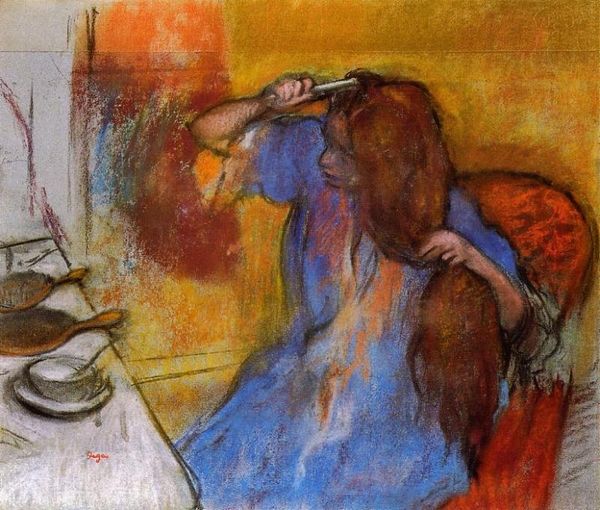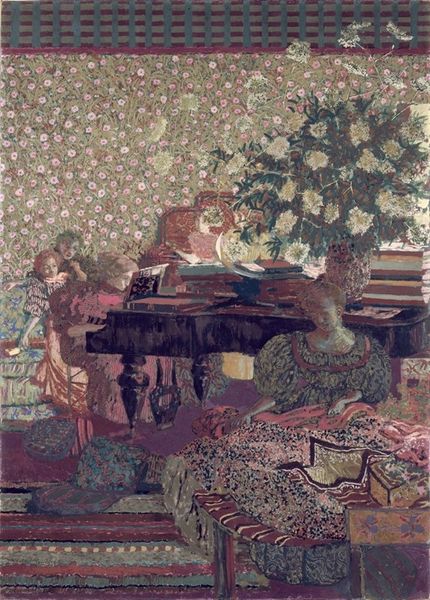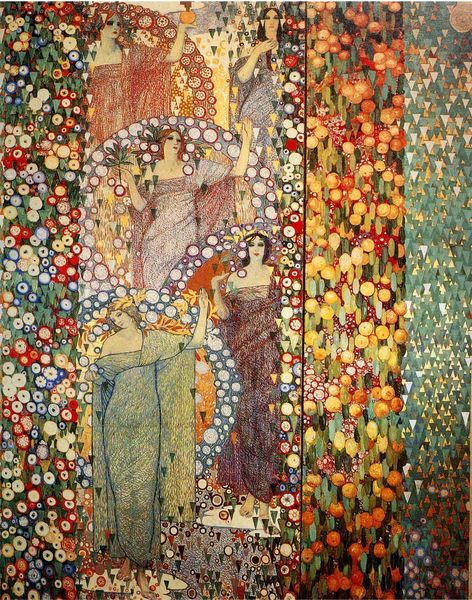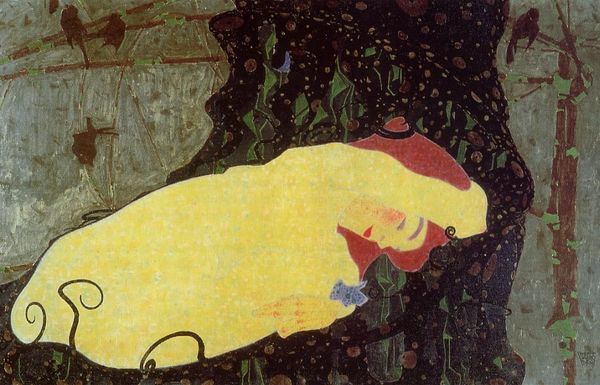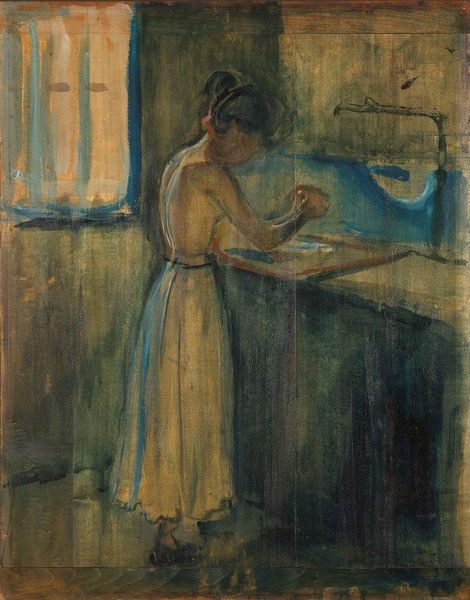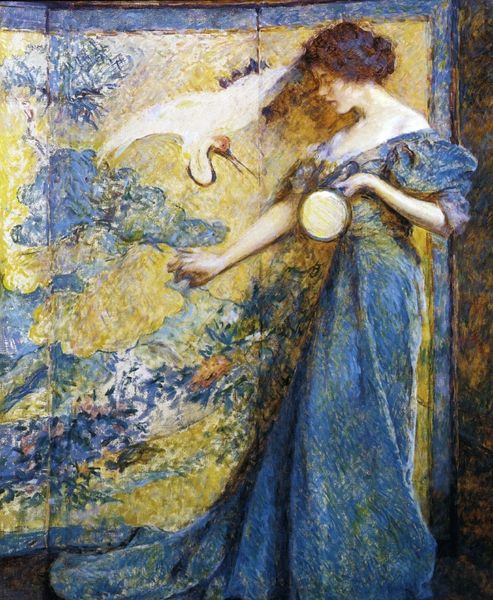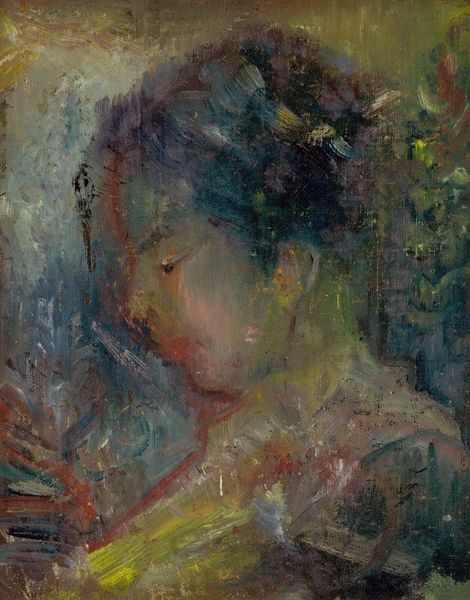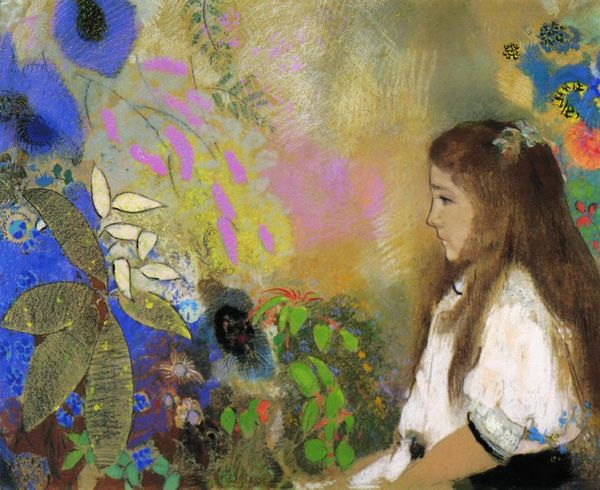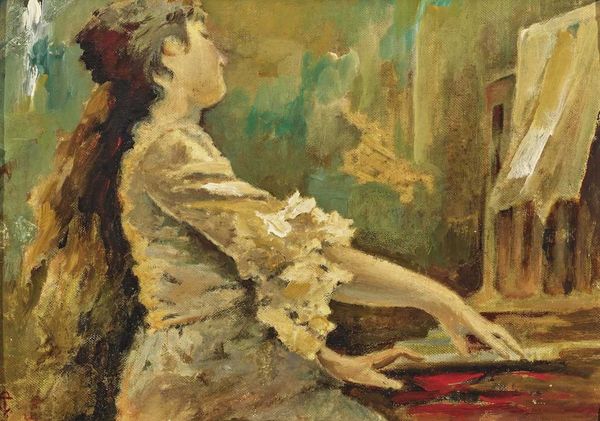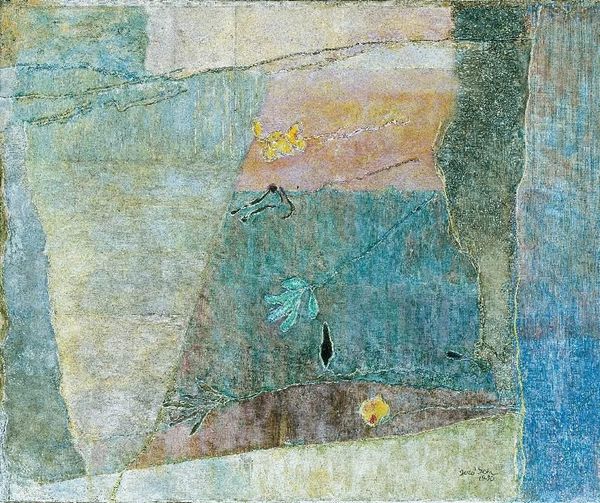
painting, oil-paint
#
portrait
#
gouache
#
acrylic
#
painting
#
oil-paint
#
painted
#
oil painting
#
symbolism
#
watercolor
Dimensions: 37 x 44.5 cm
Copyright: Public domain
Curator: Before us hangs Gustav Klimt’s “Music,” created in 1895. Klimt worked in oils, watercolor, and gouache to render this striking Symbolist piece. What catches your eye first? Editor: It's moody! That dark dress, the skull motifs...but then the lyre, the little blooms scattered around—it feels like a bittersweet melody visualized, all shadowed contemplation and brief sparks of beauty. I like the gold tone, though, especially, that the lyre has. Curator: That interplay is classic Klimt, contrasting darkness with life, mortality with beauty. Notice the vase, just to the right of the harp. Does its form evoke something? It almost appears human. Vases typically act as symbols of femininity, and is further enhanced by Klimt in its depiction of a veiled or partially hidden face. Editor: Yeah! It almost looks like a woman's face pressed against it. Kind of ghostly. I’m really drawn to the blue brushstrokes and the composition though; the harp kind of divides the scene into different worlds, the living musician and then something more ethereal in the background. What do you think about the symbolism here? It feels heavy. Curator: Music itself traditionally symbolizes harmony and order, yet here it’s intertwined with symbols of death. The golden skulls hint at mortality, but are almost whimsical—do you not see the gold tone? Perhaps suggesting how music, or art, can transcend and transform even the grim realities. These skull motifs and instrument-based symbols might also evoke thoughts of Vanitas paintings of earlier eras, the visual motifs and philosophical exploration is there. Editor: Right, right...it's a meditation. Music, art, even love perhaps, becomes a way to acknowledge—maybe even poke fun at—our fleeting existence. It’s a darkly funny idea. Also, did Klimt finish this? The woman in the front is painted, yet many of the figures are sketches or impressions. It almost has the quality of an unedited composition or draft that showcases all the working steps in creating the work. Curator: Yes, that ambiguity of finish can suggest the incomplete, ever-evolving nature of life and art. The composition pushes and pulls—complete and unfinished. It’s what I would refer to as controlled freedom. What lasting thought does this artwork leave you with? Editor: Maybe that art, even at its darkest, can be a kind of cheeky embrace of life's little ironies. Makes me want to put on some upbeat sad music! How about you? Curator: Indeed. Klimt prompts us to consider how cultural memory transforms sorrow into beauty—mortality transmuted by a golden lyre into the songs we carry through time.
Comments
No comments
Be the first to comment and join the conversation on the ultimate creative platform.

